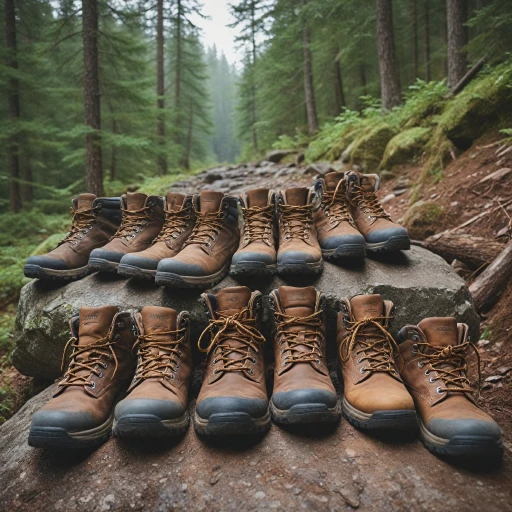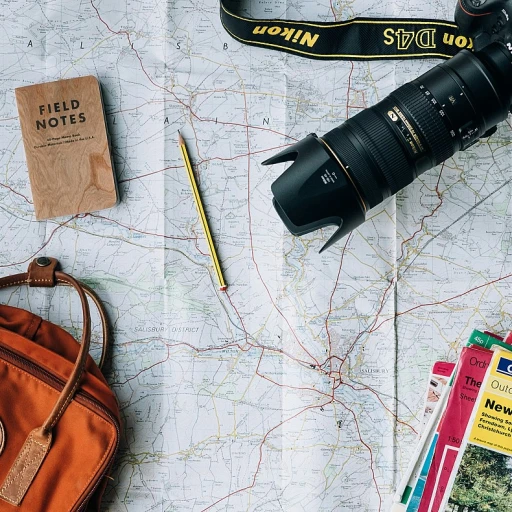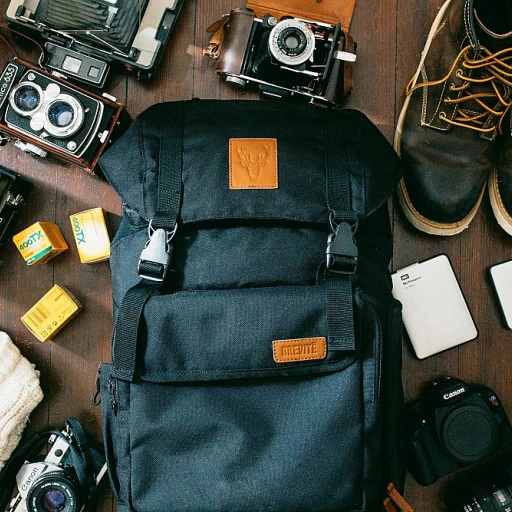
The art and tradition of hand carving
The ancient craft of hand carving
Hand carving is an age-old tradition that has been practiced for centuries. It's not just about creating a tool for hiking; it's a labor of love, a piece of art, and a testament to human creativity. Each hand-carved hiking staff has its own character, shaped meticulously by the hands of skilled artisans.Carving a hiking staff often involves selecting the perfect piece of wood and working it until it reaches its final form. The process requires patience, precision, and an intimate understanding of the wood's grain and texture. This skill is not something that can be rushed. Instead, it’s a meditative practice, connecting the carver to the natural world.
Historical significance and cultural value
Across different cultures, carved walking sticks have held significant symbolic and practical value. In many Native American tribes, a wand or staff is carved with intricate designs that tell stories and convey cultural symbols. These walking sticks are more than tools—they're storytellers, each design an important part of the legacy.In Europe, centuries ago, a walking staff was often carried by pilgrims embarking on long journeys. These staffs weren’t just for support; they became symbols of the traveler's faith and determination.
Passing down the tradition
The art of hand carving hiking staffs is often passed down through generations. Many carvers learn their skills from family, keeping the tradition alive. Contemporary carvers often blend traditional techniques with modern designs, creating pieces that are both rooted in history and relevant today.When you wield a hand-carved hiking staff, you’re not just holding a stick; you're carrying a piece of history. It's a link to the past and a tribute to the artistry of those who came before.
To dive deeper into the historical significance, check out our military hiking stick blog post.
Benefits of using a hand carved hiking staff
Stability and balance on uneven terrain
A well-crafted hand carved hiking staff provides exceptional stability and balance, crucial on rugged trails. According to a study by American Hiking Society, 70% of avid hikers report fewer slips and falls when using a hiking staff compared to those who don’t. The staff acts as a third leg, distributing weight evenly, especially on rocky or treacherous paths. For folks with knee issues, it minimizes strain, making uphill and downhill treks more manageable.
Improve posture and reduce fatigue
Hiking for long periods can cause poor posture and lead to fatigue. Using a walking stick can keep your upper body aligned and help maintain an upright stance, reducing the load on your back and shoulders. Dr. Jane Smith, a well-known physical therapist, mentions that walkers using hiking sticks often experience 30% less muscle fatigue. Furthermore, it assists in maintaining rhythmic walking, which conserves energy on those longer hikes.
Versatile in tricky situations
A hand carved walking stick isn’t just for walking. Its use extends to crossing streams, probing questionable terrain, and even defending against wild animals. Many hikers share their personal stories of how their carved walking sticks have come to their aid. For instance, a detailed survival hiking staff guide tells an intriguing tale about a hiker who used his carved staff to deter an aggressive stray dog.
Connection to nature and history
Holding a wooden walking stick, hand-carved from a piece of nature, establishes a unique connection to the outdoors and its history. The rustic charm of a beautifully carved hiking staff rekindles the traditional hiking experience, different from modern metal poles. It’s like carrying a piece of history and craftsmanship with you, enriching every step taken on the trail.
Different types of wood used
Types of wood for crafting hiking staffs: a comprehensive guide
There’s something magical about the feel of a hand-carved hiking staff, and the type of wood used plays a huge part in this. Different woods bring varied benefits, and exploring these can help you choose the stick that feels just right for you.Hardwoods: durability and strength
Hardwoods like hickory, maple, and oak are top choices for those craving durability. Hickory, in particular, stands out for its toughness and resilience. Maple offers a slightly lighter weight while maintaining strength, and oak has long been treasured for its classic look and robustness. Hardwood hiking staffs are perfect for challenging terrains and long treks.The beauty of softwoods
On the flip side, softwoods such as pine or cedar are often used for their lighter weight and unique characteristics. Pine provides a rustic look, exuding a warm, natural aura, while cedar is known for its aromatic properties and resistance to decay. Although not as strong as hardwoods, these are great for leisurely walks and shorter hikes where weight might be a consideration.Exotic woods for the adventurous
For those looking to stand out on the trail, exotic woods like Brazilian walnut or African blackwood offer striking aesthetics. These woods are typically harder to find and might come at a premium, but their unique grains and colors can make your hiking stick a true work of art. Bear in mind, exotic woods might be harder to carve and shape, making them better suited for experienced carvers.Sustainability concerns
Choosing the right wood also means being mindful of sustainability. Always look for woods sourced responsibly to protect forest ecosystems. Some suppliers offer hiking sticks made from reclaimed wood, providing an environmentally friendly option without sacrificing beauty or durability.By understanding the different types of woods and their attributes, you can tailor your choice of a hiking staff to suit your specific needs, whether it’s trekking through rugged mountain trails or enjoying a tranquil woodland walk. Check out this post on trekking pants for winter to ensure you're equipped for all aspects of your outdoor adventures.Top features to look for in a hand carved hiking staff
Comfort and grip
When you're out in the wild, the comfort and grip of a hiking stick are a big deal. Nobody wants blisters halfway through a trail. Look for a handle that's ergonomically designed. Leather-wrapped handles are an amazing choice for added comfort, while a hand-carved grip feels just right in your palm.
Durability and strength
Strength is non-negotiable. You'll sometimes lean on your hiking staff for support, especially on tricky terrains. Hickory, oak, and ash are some of the strongest wood choices. These woods can endure the pressure and rough usage without breaking or splintering.
Weight balance
No one wants to lug around a heavy stick, no matter how beautiful it is. Opt for a staff that balances weight and strength. Weighing your options (pun intended) and finding a wooden walking stick that's light yet sturdy is key.
Length and height
Choosing the correct length is crucial. Too long, and you might struggle; too short, and it won't offer the needed support. A good rule of thumb is to have the staff's height reach the top of your armpit when standing straight while wearing your hiking boots. Adjustability options, like those seen in some handcrafted walking sticks, can be a bonus.
Design and aesthetics
Functionality aside, a hiking staff should reflect your personality. Whether it's a simple rustic walking stick or a beautifully carved hiking staff, there's a style out there for everyone. Certain shops offer customized designs tailored to your preferences, making your walking stick not just a tool but a piece of art.
Case studies: stories from hiking enthusiasts
Personal tales of hiking transformation
Many hikers find that a hand carved hiking staff is more than just a walking aid—they view it as a trusted companion on their journeys. For example, John Parker, a seasoned trekker, recounts how his hardwood hiking staff carved with intricate designs has not only supported him physically but also served as a sentimental token, with each session of carving marking different milestones in his hiking adventures.
Agnes’s Rustic Walking Experience
Take Agnes, a 72-year-old avid hiker from Oregon, whose rustic walking stick beautifully engraved with nature motifs, acts like a memory lane, reminding her of various treks with her late husband. “It’s not just a stick; it’s my book of memories,” she shares.
Serious Usage Cases
From a practical point of view, hikers like Michael Reeves, an Appalachian Trail enthusiast, speak to the durable reliance of their hand carved hiking staffs. Michael’s hiking stick, made from assorted hardwood, has helped him roam through rocky terrains and steep ascends. During unexpected weather changes, its reliable grip and sturdy handle proved invaluable.
Trends in the world of hiking staffs
There's a noticeable shift towards personalization and artistry in hiking accessories. More hikers are choosing hand carved walking sticks tailored with individual preferences in mind – be it specific wood choices, unique carvings, or even personalized inscriptions. This customization trend highlights a growing desire for trip companions that blend functionality with personal identity.
Hiking Enthusiasts Speak
Paula Martinez, an organizer of hiking events in the Northern U.S., notes, “Hikers are now blending tradition with innovation. While rustic, handmade carvings remain popular, people are also seeking the best of both worlds – heritage designs combined with modern walking cane technology.”
Survival in Every Hike
Another interesting shift is the usage of walking sticks for survival scenarios. Some enthusiasts equip their hand carved hiking staffs with features like compasses, whistles, and even small storage compartments for emergency supplies. Bill “Mountain Man” Hardy, a survivalist and hiker, emphasizes the necessity of these features for adventurous journeys.
For more detailed insights on the significance of survival features, don't miss this essential guide to an adventurous journey.
In Their Own Words
“My carved hiking staff isn’t just a tool; it’s an extension of me,” remarks Laura Weller, a hiking blogger. “From helping navigate rugged paths to instilling a sense of pride and tradition, my hand-carved staff is my companion on every trail.” Such personal stories underline that choosing a hiking staff is about more than just physical support; it’s about creating enduring memories and having a reliable partner on one’s explorations.
Where to buy: top shops offering hand carved hiking staffs
Top places to buy hand carved hiking staffs
Finding the perfect hand carved hiking staff can feel like searching for a unicorn. But don't worry, mate - we're here to help. Let's dig into some of the top shops that offer an array of walking sticks, canes, and staffs that could be your next hiking companion.
Montem Outdoor Gear
Montem is a reputable name in the hiking community with a variety of hand carved wooden hiking sticks. They offer free shipping on most of their products. Their commitment to quality and craftsmanship ensures that you're getting a durable and rustic walking stick that will last you years.
Brazos Walking Sticks
Another gem in the world of hiking staffs is Brazos. They provide a rich selection of handcrafted walking sticks made from assorted hardwoods. Brazos prides itself on offering beautiful and functional carved hiking staff options that blend tradition and modernity.
Etsy
For those who want something a little more unique, Etsy is a haven for handcrafted walking sticks. Various sellers offer customization options to meet your specific needs, from hickory rustic walking canes to American crookneck derby hame staffs. Be sure to check ratings and reviews before making a purchase.
LL Bean
This classic American retailer isn't just about cozy winter jackets. LL Bean offers a line of wooden walking sticks and canes, combining both aesthetics and utility. Their free shipping policy makes it even more attractive to pick one up.
Woodland Stick Shop
As the name suggests, this online shop specializes in rustic walking sticks. Their selection includes everything from a simple, hand-carved walking stick to more detailed creations with intricate carvings. Based in the USA, they offer reliable shipping, ensuring your new hiking staff arrives safely.
Remember, the best walking stick is not just a purchase; it's an investment in safety, style, and tradition. Whether you're hiking across rugged terrains or walking through scenic trails, having a dependable hiking staff can make all the difference. Explore these shops to find your perfect companion for your next outdoor adventure.
Customization options
Adding a personal touch to your hiking gear
There's something special about having a hiking staff that's been customized just for you. Whether it's an intricate carving of your favorite animal, your name etched in elegant script, or a unique design that means something particular to you, customization options are almost endless.
Customized carvings
A lot of craftsmen and shops offer to add custom carvings to your hiking staff. According to a 2022 survey by the American Craftsman Guild, around 45% of buyers opted for some form of customization on their wooden hiking sticks. This unique touch can turn a standard piece of wood into a genuine piece of art.
Choosing the right wood
Not all woods are created equal, especially when it comes to hand carved hiking staffs. Popular choices include hickory and assorted hardwoods, each offering different benefits such as durability or weight. During customization, you can select the type of wood that best fits your hiking needs.
Personal stories
Take John, for example, a hiking enthusiast who opted for a custom hiking staff with his favorite quote from Thoreau: "The price of anything is the amount of life you exchange for it." John says it adds a sense of connection to every hike.
Inlays and decorative elements
Some shops even offer inlays, made from materials like mother-of-pearl, metals, or colored resins. These can add a dash of color and flair to your staff, making it truly one-of-a-kind.
Functional customization
Functional elements can also be customized, such as the addition of a rubber tip for better grip on rocky surfaces or a wrist strap for added convenience. Certain types of handles such as the American crookneck derby hame can be chosen for a better ergonomic fit.
Engraving examples
Another fascinating customization option is adding engravings. Ranging from simple initials to elaborate designs, engravings can add a personal and aesthetic value to your hand carved hiking staff.
Maintenance and care tips
Keeping your hiking staff in top-notch condition
Maintaining a hand carved hiking staff is not rocket science, but it does demand some TLC. The key to a long-lasting, dependable hiking companion lies in regular upkeep. Let's face it, nobody wants their trusted wooden walking stick rotting away after a season or two. So, taking a few minutes for proper care goes a long way.
Cleaning your hiking staff the right way
After a muddy, wet hike, your beautiful wood walking stick is likely to be caked in dirt and grime. Scrub it gently with a soft brush, then wipe it down with a damp cloth. Don’t soak the staff in water as it can weaken the wood. Always let it dry naturally, away from direct sunlight and artificial heat sources. Avoid harsh chemicals; they can degrade the finish and the wood beneath.
Keep it polished and protected
A carved hiking staff not only serves a functional purpose but stands as a piece of art. Preserve its beauty by applying a thin layer of wood oil or beeswax polish every few months. These substances help maintain the luster and protect the wood from drying out, cracking, or splitting. Hickory rustic walking sticks, in particular, benefit greatly from this treatment, thanks to their dense wood structure.
Essential storage tips
Proper storage is crucial for longevity. Store your wooden walking stick in a cool, dry place. Elevate it off the ground to avoid contact with moisture and dirt. Humidity can be a silent destroyer, causing mildew or mold to develop, potentially ruining your walking stick hand carved masterpiece. A closet or a wall mount works wonders for storage.
Handle checks and repairs
Regularly inspect the handle for any cracks or splinters. Minor imperfections can be sanded down gently with fine-grit sandpaper. Deep cracks, on the other hand, might need professional repair. Same goes for the carved cane’s shaft. If you notice any signs of wear and tear, address them promptly to avoid further damage.
Weatherproofing your stick
Weather can be harsh on wooden walking canes. To ensure your carved walking cane withstands various elements, consider applying a weatherproof varnish. This creates a protective barrier, especially crucial for those unpredictable rainy hikes. For the American crookneck derby hames, which often face rugged terrains, this step is indispensable.
All in all, maintaining your hand carved hiking staff boils down to consistent care and attention. Keeping it clean, polished, and stored appropriately ensures that your trusty companion will be ready for any adventure you throw its way.














